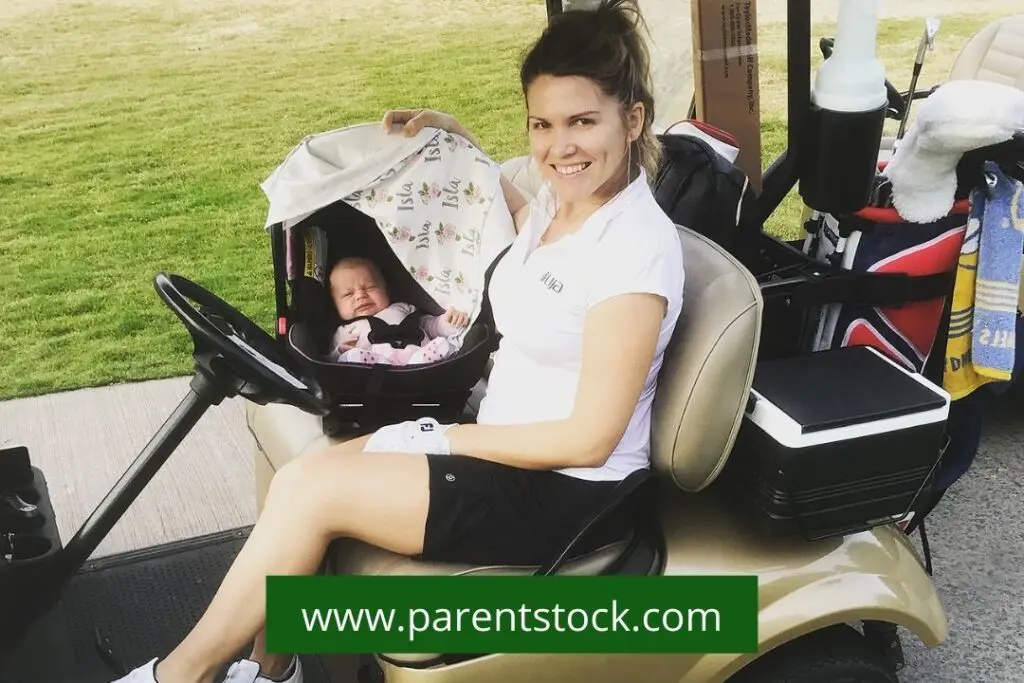If you have a small kid, you know how important it is to have a car seat. In the case of an accident, they provide an essential layer of defence and may drastically cut down on potential harm. Yet, children’s requirements for car seats may alter as they mature. most of the parents asked when to upgrade car seat?
To keep your kid safe in the vehicle, you must know when to switch to a more advanced car seat.
In this article, we’ll discuss when it’s time to update your child’s car seat depending on their weight, height, and age, along with additional considerations to keep in mind.
When Should You Upgrade Your Child’s Car Seat?
Children should always be properly restrained in a car seat for their own safety whenever they are in a car. Children’s car seat requirements may alter as they become older. When it comes to upgrading your child’s car seat, here are some basic guidelines:
Infant car seats:
The American Academy of Pediatrics recommends that infants ride rear-facing in a car seat until they reach one year of age or 20 pounds in weight, whichever comes first. When your kid outgrows the weight or height restrictions of the infant car seat, it’s time to make the switch to a convertible car seat.
Convertible car seats:
Convertible car seats may be installed either facing the back or facing the front of the vehicle. Whenever feasible, keep your kid in a rear-facing car seat until they reach the maximum height or weight permitted by the manufacturer. As your kid grows too tall for the rear-facing position, it’s time to move him or her to the front.
Booster seats:
When a youngster has outgrown their convertible car seat but still too little for an adult seatbelt, a booster seat may use in the automobile. When your kid can sit with his or her back against the vehicle seat, legs bent over the edge of the seat, and the seatbelt over his or her lap and shoulder, it is time to switch to a standard seatbelt.
Please remember that these are only basic advice and that you should always refer to and adhere to the instructions provided by the car seat manufacturer. When it comes to upgrading your child’s car seat, it’s not only about their weight, height, and age.
It’s crucial to think about things like the car seat’s age, safety recalls, compatibility with your vehicle, your financial situation, and any particular requirements your child may have. Following these recommendations and keeping these other considerations in mind can help you give your kid a more pleasant and relaxing car ride.
1. Infant Car Seats
In order to ensure the safety and comfort of babies, car seats have specially created for them. They must use correctly, since they are rear-facing and have height and weight restrictions for your child’s protection. Everything to know before switching from an infant to a convertible car seat.
Weight and height limits:
Baby car seats generally have weight limitations between 22 and 35 pounds, and height limits between 29 and 32 inches. If you want to know when it’s time to replace your baby car seat, you should examine the manufacturer’s recommended maximum weight and height limitations.
When to upgrade:
As your kid outgrows the weight and height restrictions of their infant car seat, it’s time to switch to a convertible car seat. As soon as your kid hits the weight limit of most infant car seats (often between 30 and 35 pounds), you should switch to a larger model.
Signs your child has outgrown their infant car seat:
When your child’s head is less than an inch from the top of the car seat, when their feet are beyond the edge of the car seat, or when their weight exceeds the weight restriction of the car seat, it is time to upgrade to a booster seat.
Convertible car seats are an improvement over baby car seats because they enable your kid to ride in the safest posture for youngsters, facing backward. Convertible car seats allow for extended rear-facing usage and, if the kid reaches the appropriate weight and height, allow for forward-facing use. To guarantee optimal safety, follow the manufacturer’s installation instructions to the letter.
2. Convertible Car Seats
Convertible car seats may use either in the rearward- or forward-facing orientation. They have features of last longer than baby car seats, but there are still size and weight restrictions to keep in mind. Information about transitioning from a convertible to a booster car seat.
Weight and height limits:
Limits on both weight and height apply to convertible car seats. Depending on the model, the former have a maximum weight capacity of 40 pounds, while the latter vary from 40 to 49 inches. It’s important to consult the manufacturer’s standards to determine when it’s time to replace your child’s car seat, since these restrictions differ based on the make and model.
When to upgrade:
As your kid outgrows the weight and height restrictions of their convertible car seat, you should switch to a booster seat. As soon as your kid outgrows their current seat due to their weight or height, you should switch them to a booster seat.
Signs your child has outgrown their convertible car seat:
How to tell when your kid has outgrown a convertible car seat: If your child’s head is within an inch of the top of the convertible car seat, their shoulders are over the top harness slots, or their weight is beyond the weight restriction of the car seat, it is time to upgrade to a booster seat.
If your kid is too short for the seatbelt in the vehicle, you might consider switching to a booster seat. Your child’s seatbelt will fit more snugly across their body if you use a booster seat. To guarantee optimal safety, it is essential to follow the manufacturer’s recommendations while installing the booster seat. Please remember that children should still ride in the rear seat until they are at least 13 years old.
3. Booster Seats
When to upgrade car seat? When a youngster has outgrown their convertible car seat but is still too little for an adult seatbelt, a booster seat may be used in its place. There are high-back and backless booster chairs available. Here’s some information to keep in mind when you transition your child from a booster seat to a standard seatbelt.
Weight and height limits:
Booster seats feature weight and height restrictions of 40 to 120 pounds and 38 to 63 inches, respectively. It is important to examine the manufacturer’s instructions to determine when it is appropriate to graduate from a booster seat since the weight and height limitations vary based on the brand and model.
When to upgrade:
When your kid can sit with his or her back against the vehicle seat, legs bent over the edge of the seat, and the seatbelt over his or her lap and shoulder, it is time to switch from the booster seat to the ordinary seatbelt.
Signs your child has outgrown their booster seat:
There are a few telltale signs that your kid has outgrown their booster seat: if their ears are over the top of the car seat, if the lap belt rides up on their stomach, or if their weight is above the booster seat’s weight restriction.
Make sure the seatbelt fits properly when transitioning from a booster seat to a standard seatbelt. Both the lap and shoulder belts should be worn properly, with the former resting over the upper thighs and the latter across the center of the chest and shoulder and away from the neck and face. Until they are at least 13 years old, keep your kid in the back seat. Under no circumstances should you ever position a rear-facing car seat in front of a deployed airbag.
Other Factors to Consider
While the child’s weight, height, and age are the most important aspects to think about when upgrading car seats, there are several additional things to keep in mind as well. For more information, please read on:
Car seat expiration:
Depending on the model, car seats are only safe to use for children between the ages of six and 10 years after their original manufacturing date. Even though the car seat seems OK, it should be changed if it has reached its expiration date.
Safety recalls:
Recalls for safety reasons are occasionally issued for car seats. Registering your car seat with the manufacturer will ensure that you get recall notices as soon as possible. Do not use a recalled car seat and instead promptly replace or have it repaired as directed by the manufacturer.
Vehicle compatibility:
Not all car seats can be used in every automobile. To make sure the car seat is placed properly and safely, you should consult both the owner’s handbook for your vehicle and the car seat’s instructions.
Budget:
Cost: Investing in a new car seat may put a serious dent in your wallet, so it’s crucial to think about your financial situation before making a purchase. But, the well-being of your kid should always come first, so choose a car seat that conforms to current safety regulations and is suitable for your child.
Special needs:
If your kid has unique requirements, you may want to look into purchasing a specially designed car seat. When deciding which car seat is best for your kid, it’s best to see a doctor or a trained child passenger safety technician.
In conclusion, if you want your kid to be secure in the vehicle, you need to upgrade their car seat. Follow the car seat’s guidelines for height, weight, age, vehicle compatibility, price range, and any other considerations that may be relevant. Get advice from a trained professional when you have questions about kid passenger safety.
How long can a baby be in a infant car seat?
The American Academy of Pediatrics (AAP) recommends that infants remain in a rear-facing car seat until they reach one year of age or 20 pounds in weight, whichever comes first. But, this is only the bare minimum, and ideally, your kid should ride in a rear-facing car seat for as long as feasible.
Limits on how much a baby may weigh and how tall the user must be apply to most brands and models of infant car seats. For information on your baby car seat’s weight and height restrictions, please refer to the owner’s handbook. Baby car seats typically hold newborns weighing between 22 and 35 pounds and measuring between 29 and 32 inches in height.
As soon as your kid grows too tall for a rear-facing car seat, you should upgrade to a convertible seat that can be used in either the rear- or forward-facing position. Until your kid reaches the maximum height or weight restriction for the convertible car seat, it should be put in the rear-facing position. At that point, you may turn around and face the front.
Your child’s car seat must be installed and used in accordance with the manufacturer’s instructions, and you must not exceed the seat’s weight or height limitations. Help your kid stay safe on the road by using these tips.
What is the next car seat after infant?
A convertible car seat is the step up from a baby seat. A convertible car seat may be used in either the rear-facing or forward-facing orientation, whereas an infant car seat can only be used in the rear-facing orientation.
Unlike infant car seats, convertible car seats designed to accommodate a growing child, up to a certain weight and height restriction. Convertible car seats have a weight range from 5 pounds for use in the rear-facing position all the way up to 40 or 50 pounds for use in the forward-facing position. Convertible car seats may use for children weighing up to 65 or 90 pounds in the forward-facing position.
Keep in mind that convertible car seats might vary in their maximum allowable weight and height from model to model and brand to brand, so always refer to the owner’s handbook before using the seat. It’s also crucial that you abide by local rules and regulations, as well as the manufacturer’s instructions for setup and operation. Help your kid stay safe on the road by using these tips.
What age do babies go into Stage 2 car seats?
Due to the fact that various car seat manufacturers use different nomenclature and labelling schemes, there is no universally accepted “Stage 2” car seat categorization. Nevertheless, following an infant car seat, most parents opt for a convertible car seat, which can install in either the rear-facing or forward-facing orientation.
You should keep your kid in a rear-facing convertible car seat for as long as possible, preferably until your child hits the car seat’s maximum weight or height limits. As your kid grows too tall for the rear-facing position, it’s time to move him or her to the front.
Children should ride in a rear-facing car seat until they are at least two years old, or until they reach the maximum weight or height permitted by the car seat, whichever comes first. This recommendation comes from the American Academy of Pediatrics (AAP). The child should then utilise a forward-facing car seat until they outgrow it in terms of weight or height.
Be aware that car seat weight and height restrictions may vary by model and manufacturer; see your car seat’s user manual for details. It’s also crucial that you abide by local rules and regulations, as well as the manufacturer’s instructions for setup and operation. Help your kid stay safe on the road by using these tips.
Conclusion
When to upgrade car seat? Improving the quality of your child’s car seat is a crucial step in ensuring their safety in the automobile. The car seat’s weight, height, and age limitations, as well as other considerations including its expiry date, safety recalls, vehicle compatibility, price range, and other unique requirements, have taken into account.
If you have any questions or concerns, please read the manufacturer’s instructions carefully and contact a trained child passenger safety technician. You can make sure your kid has a pleasant and safe trip in the car if you follow these guidelines.




